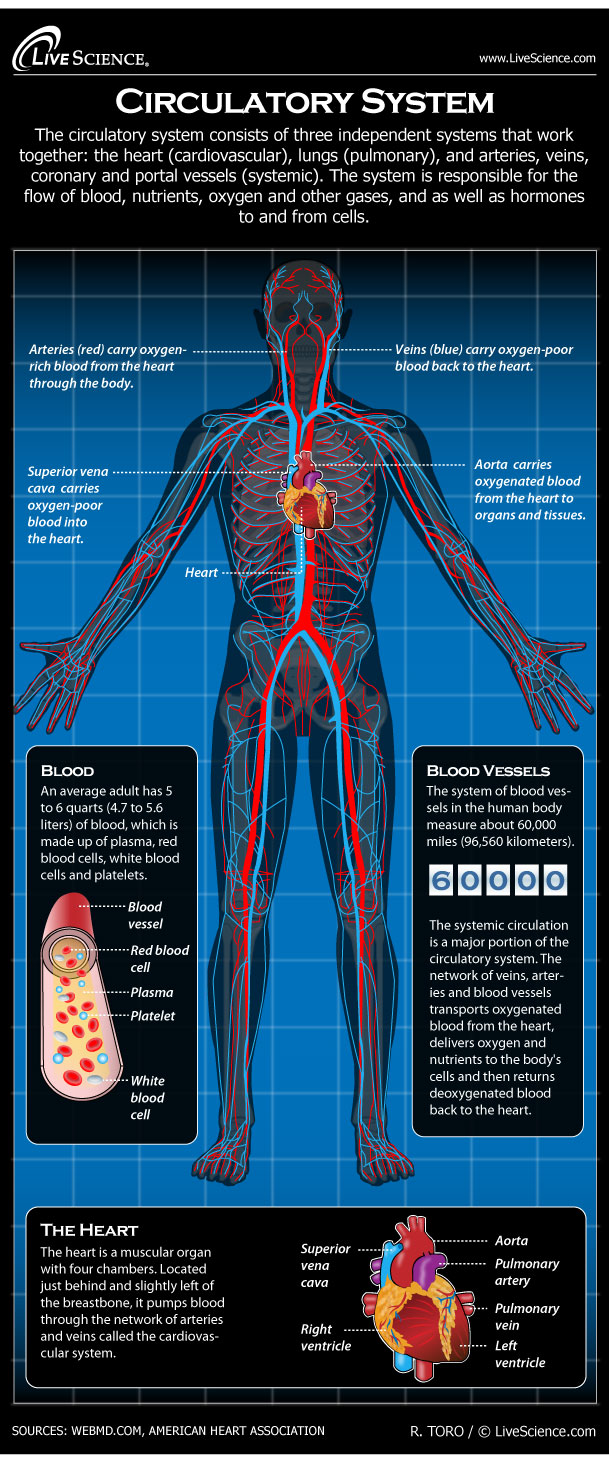Diagram of the Human Circulatory System (Infographic)

The circulatory system consists of three independent systems that work together: the heart (cardiovascular), lungs (pulmonary), and arteries, veins, coronary and portal vessels (systemic). The system is responsible for the flow of blood, nutrients, oxygen and other gases, and as well as hormones to and from cells.
An average adult has 5 to 6 quarts (4.7 to 5.6 liters) of blood, which is made up of plasma, red blood cells, white blood cells and platelets.
The heart is a muscular organ with four chambers. Located just behind and slightly left of the breastbone, it pumps blood through the network of arteries and veins called the cardiovas- cular system.
The systemic circulation is a major portion of the circulatory system. The network of veins, arteries and blood vessels transports oxygenated blood from the heart, delivers oxygen and nutrients to the body's cells and then returns deoxygenated blood back to the heart.
The system of blood vessels in the human body measure about 60,000 miles (96,560 kilometers).
Arteries carry oxygen-rich blood from the heart through the body. Veins carry oxygen-poor blood back to the heart.
The superior vena cava carries oxygen-poor blood into the heart. The aorta carries oxygenated blood from the heart to organs and tissues.
Related:
Sign up for the Live Science daily newsletter now
Get the world’s most fascinating discoveries delivered straight to your inbox.

